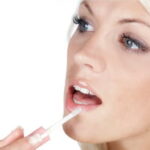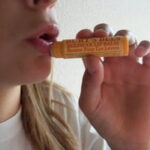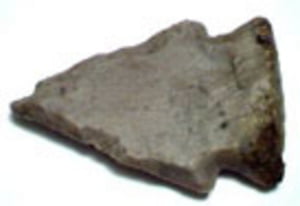Both Chapstick and Lip Smackers have been on American store shelves for a long time. When I was a kid, I pulled out my Chapstick when the weather would hover around zero, so my lips wouldn’t crack and peel in the cold. I also remember getting Lip Smackers gifts from other girls in grade school, coming in long tubes with multiple flavored gloss.
Lip Smackers are made by the Bonne Bell company, a firm started in 1927 by a J.G. Bell. Bell mainly manufactured cosmetic items, and sold them door to door. The company created Lip Smackers in 1973, debuting with its Strawberry flavor. Originally designed to be used by outdoor enthusiasts, they wanted to make their lip gloss different than other products. According to Bonne Bell, they were the first company to distribute a product of this type.
Lip Smacker’s does not list ingredients on its product label, but the Bonne Bell website gives a breakdown: “Castor oil, Beeswax, Cetyl Acetate, Candelilla Wax, Natural and Artificial Flavors, Polybutene, Sesame Oil, Ozokerite, Carnauba, Brazilian Wax Palm, Coperinicia Cerefera, Acetylated Lanolin Alcohol, Mineral Oil, Hydrogenated Soy Glycerides.
The Chapstick brand of products are manufactured by the Wyeth corporation. The lip balm was created in the 1870s by a physician, but didn’t gain popularity until 1912, when John Morton bought the rights to the Chapstick product and began producing and selling it in stick-form. In 1963, a larger company bought out Morton’s company, and greatly expanded their product line to include different varieties and flavors.
Chapstick bills itself as both a sunscreen and sun protectant. Ingredients listed on the Classic Original product are “arachidyl propionate, camphor, cetyl alcohol, D&C; red no. 6 barium lake, FD&C; yellow no. 5 aluminum lake, fragrance, isopropyl lanolate, isopropyl myristate, lanolin, light mineral oil, methylparaben, octyldodecanol, oleyl alcohol, phenyl methicone, propylparaben, titanium dioxide, waxes”.
I generally try to stay away from products when I can’t pronounce or understand their ingredients. I have used both Chapstick and Lip Smackers, however, for well over thirty years, and have not heard of anyone suffering adverse effects after using these products.
Chapstick has come out with an All Natural stick, which lists its ingredients as “Helianthus Annuus (Sunflower) Seed Oil, Jojoba Esters, Euphorbia Cerifera (Candelilla) Wax, Cocos Nucifera (Coconut) Oil, Beeswax, Natural Flavors, Mangifera Indica (Mango) Seed Butter, Copernicia Cerifera (Carnauba) Wax, Limnanthes Alba (Meadowfoam) Seed Oil, Tocopheryl Acetate, Butyrospermum Parkii (Shea Butter) Extract, Tocopherol.” It still lists ingredients I have never heard from, but it does have a few more “natural” items than the original brand.
To me, the difference between these two products is obvious. I relate Chapstick more to medicine – that it’s helping my dry, chapped lips in either the dead of winter or the heat of the summer. I relate Lip Smackers to fun flavors, and flash back to sleepover parties and preteen girls trading different flavors with each other.
Now a mother to a preteen daughter, I can contest that the Lip Smackers craze has continued with this market group. We’ve found Lip Smackers at birthday parties, sleepovers, in Easter baskets, and Christmas stockings.
I confess to using both the Chapstick and Lip Smacker brands on a regular basis. I still prefer to use Chapstick in the winter, when the slightly menthol scent reminds me that the product is working. I stay away from Lip Smacker flavors such as A&W; Rootbeer before I walk into a corporate board meeting, but am more than willing to use some berry lip gloss in the summer time at the beach.
Even though these two products are similar in form and function, I think that they are marketed and used in different groups. No matter which stick you’re using, I think that both complete their job well.



